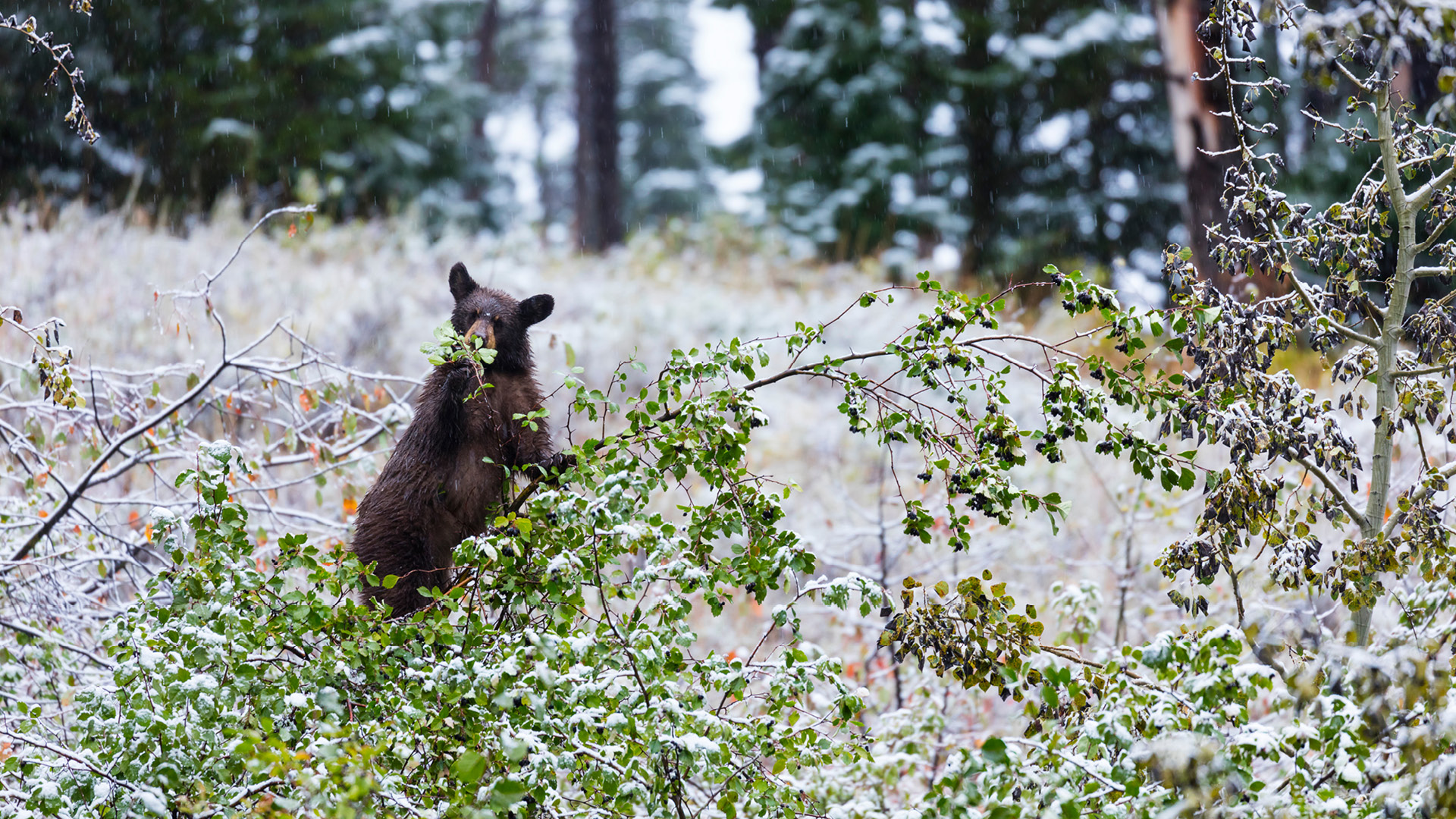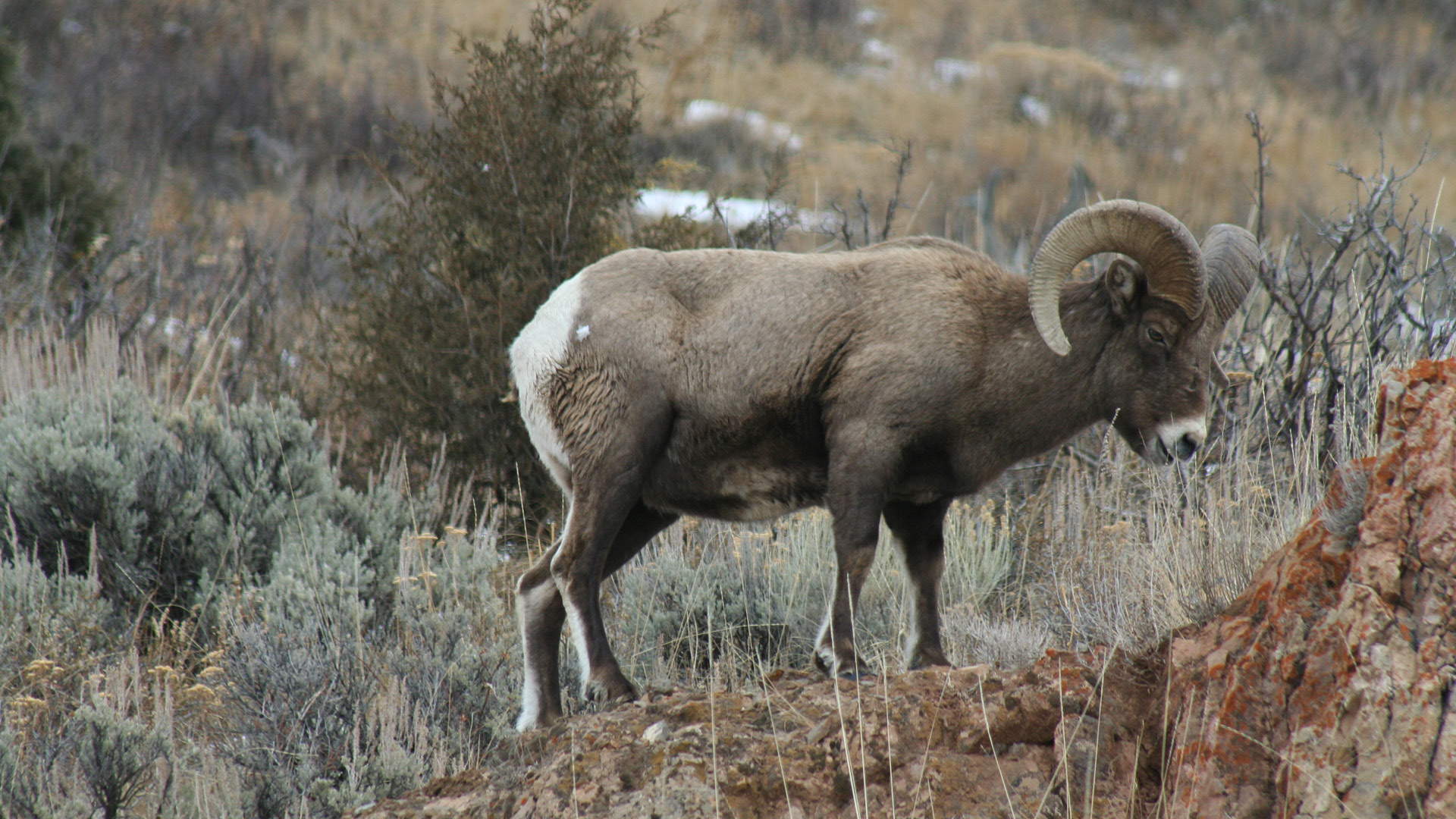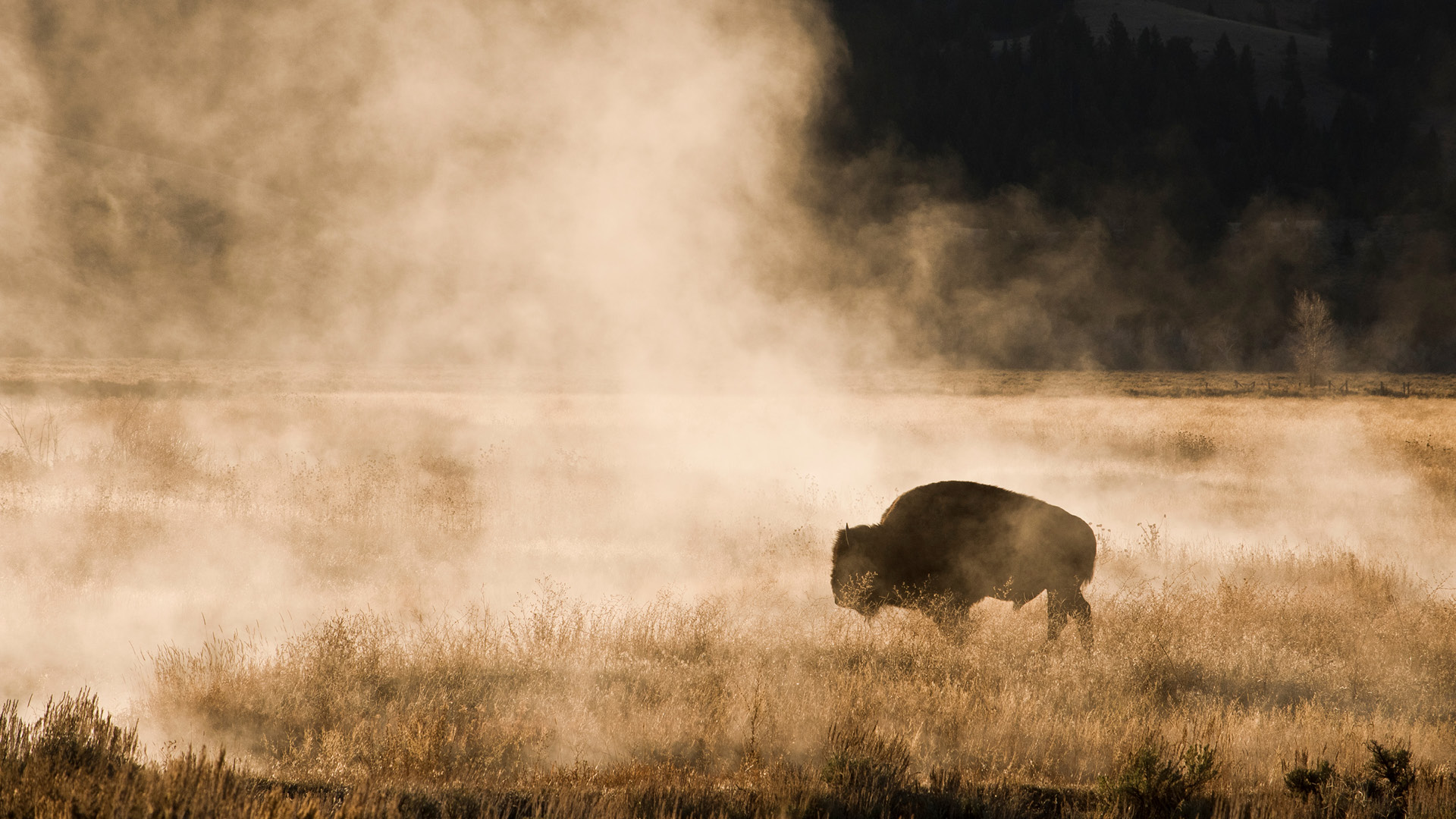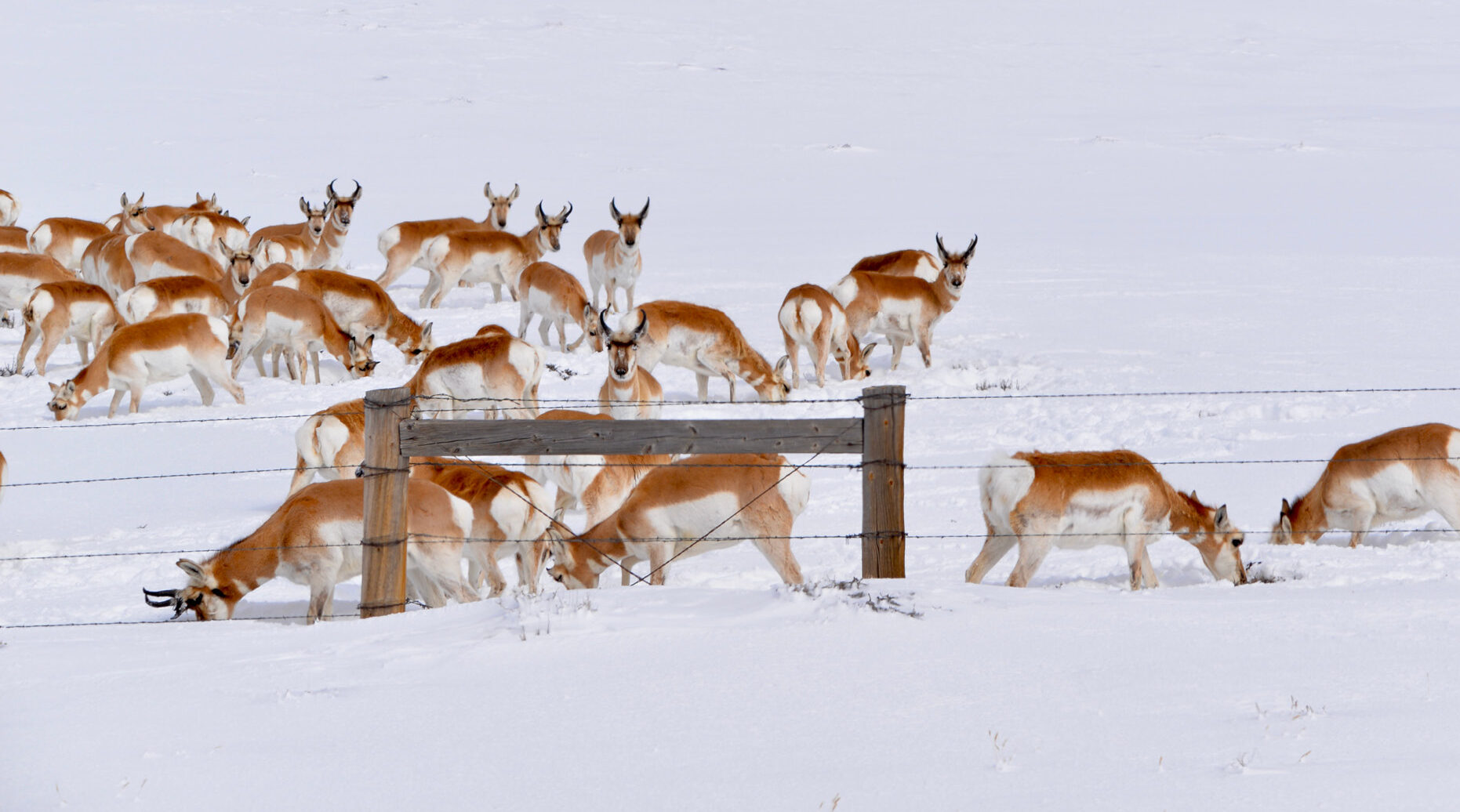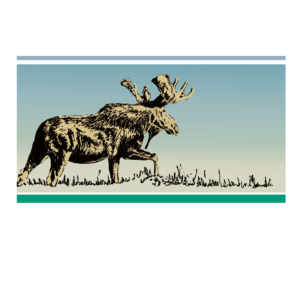A few of the area’s most popular wildlife species.
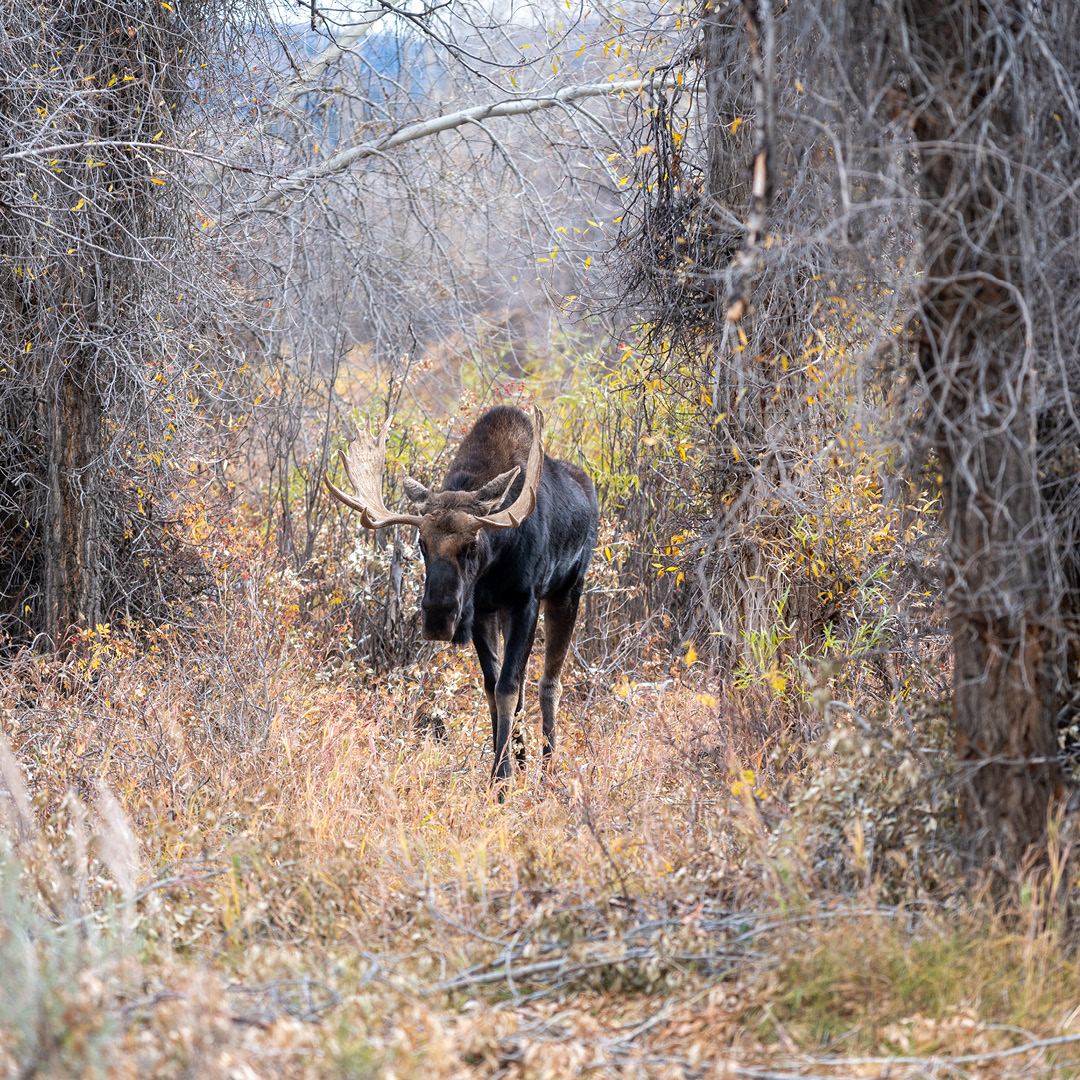
Moose

Black Bears
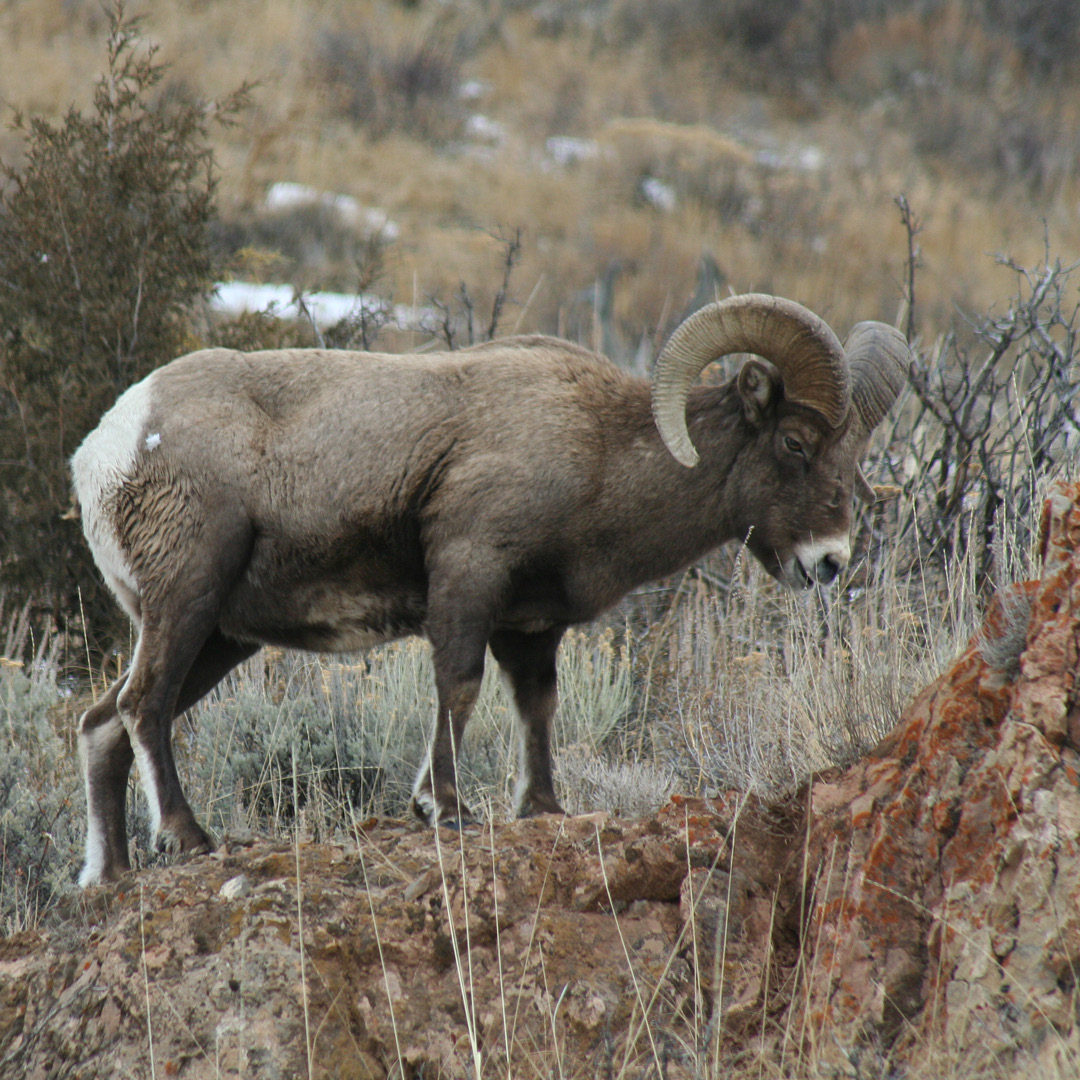
Bighorn Sheep

Bison

Pronghorn
Moose
The Gros Ventre river-bottom along the Gros Ventre Road is as good of bet as any when it comes to places to find moose.
Defined pullouts along the road make it easy to park a vehicle and scan for wildlife along the river. Oftentimes moose here draw quite a crowd of observers!
Jackson Hole is one of the best places in the West to view moose.
Today, an estimated 400 individuals comprise the “Jackson Hole Moose Herd” and can be seen year-round in Grand Teton National Park, the surrounding Bridger-Teton National Forest and even in developed areas within the Town of Jackson itself.
One of the best times to observe moose is late fall and early winter, when bulls congregate during and after the rut on the sagebrush flats near Blacktail Butte and the Town of Kelly. Here, they are easily spotted in the open sagebrush country. As winter progresses and the snow deepens moose will generally seek shelter in the river bottoms.
A species well-adapted to cold weather, moose prefer cool, shady areas during the summer months. Some individuals will beat the heat by traveling up in elevation – it is not uncommon to find the high in the Teton Range in July and August. Early morning and evening often become the best times to observe moose when the weather warms.
Black Bears
Black bears are North America’s most widespread bear species. In Wyoming, they are generally much more common than grizzly bears and occur in higher population densities.
In Grand Teton National Park and surrounding areas this species tend to prefer areas which are heavily forested. Black bears are excellent tree climbers, and using woodlands and woodland-adjacent habitat allows them to escape potential conflict with grizzlies, which are more commonly found in open areas.
Black bears can be seen almost anywhere in Grand Teton National Park when they are not undergoing seasonal torpor (hibernation) during the winter months. Look for them around String and Jenny Lake while making sure to give all bears at least 100 yards of space. Like many animals, it is not unusual to see a bear using a trail – it’s just following the path of least resistance!
One of the most reliable places to spot black bears is on the north end of Moose-Wilson Road in Grand Teton National Park.
Here, the road here twists through scenic wetlands fed by natural springs and mixed conifer and aspen forest, all of which combine to form a natural mosaic of pristine wildlife habitat. In late-fall, bears are often attracted to the hawthorn berry bushes which line the roadside.
Bighorn Sheep
Bighorn sheep are a Western ungulate (hoofed mammal) species which occurs in the Greater Yellowstone Ecosystem, as well as mountain ranges and desert basins across the American West. Males (rams) have a spectacular set of curled horns which grow with age and are used for predator defense and in combat with other rams for mating rights.
Today, the estimated sheep population in the West is a tiny fraction of what it once was. Wild sheep are especially susceptible to diseases like pneumonia, spread by domestic sheep, as well as competition from non-native species.
Winter is a great time to find bighorn sheep from the Gros Venter Herd within a five-minute drive of Jackson Town Square. The National Elk Refuge Road behind Miller’s Butte is generally well-maintained and can be accessed for several miles. Please note: you cannot leave the road here as the National Elk Refuge is not open to foot traffic. Observing the sheep is best done from a vehicle or roadside. By late spring these animals, along with the elk that winter on the refuge, will have dispersed to calving ranges in the Gros Ventre, where they will be much harder to find absent a backcountry trek deep into the wilderness.
Bison
Weighing as much as 2,200 pounds and often traveling in large herds, bison aren’t hard to spot – assuming you can find them.
One of the best places to observe some of the approximately 500 bison that inhabit Grand Teton National Park is along Highway 191, just south of Moran Junction. Once a private ranch, this grassland expanse at the north end of the Jackson Hole valley known as Elk Ranch Flats is excellent bison habitat.
While bison can be found here year-round, the herd here tends to disperse south to the National Elk Refuge during winter. As the snow recedes in April and May, look for newborn “red dogs,” the young-ofyear calves, amongst the herd. Bison rut really gets going in July and August and can make for especially exciting wildlife-watching. Closer to the Town of Jackson, bison may also be found on Antelope Flats Road in the vicinity of the Moulton Barns.
As always, please be respectful and give wildlife its space. Bison especially can be aggressive and dangerous, and visitors are gored in the Parks each year after getting carelessly close to this magnificent megafauna.
Pronghorn
Pronghorn are a species intimately tied to Wyoming’s
in-tact, sagebrush steppe habitat. Compared to the rest of the state, a relatively small number of these “American antelope” make their summer range in Grand Teton National Park, where their preferred habitat often overlaps with the Park’s bison herd.
The fastest land animal in North America, you’ll find pronghorn in open country where potential predators are more easily detected and speed can be used to avoid becoming a meal. While they blend in well with their surroundings, look for their characteristic white rumps to distinguish a pronghorn herd from the surrounding sage.
Pronghorn are most often observed from May through November around Elk Ranch Flats as well as the sagebrush flats around Blacktail Butte. They can also be found west of the Snake River near Jenny and String Lake.
In the fall, most of the pronghorn that winter in the Teton area will undergo a long-distance migration out of the Park through the Gros Ventre River Valley which is used as a pathway to access more favorable winter habitat elsewhere in the State.
Give Wildlife a Brake!
Jackson Hole Wildlife Foundation
Being Wild Jackson Hole is an effort lead by the Jackson Hole Wildlife Foundation to help ensure survival of the wild spirit of this special place by embracing and promoting environmental stewardship, along with the values and actions that support it. We encourage visitors to learn about and participate fully in our conservation efforts.
Funded by:




